In the world of arboriculture, precision, safety, and efficiency are everything. Tree care professionals often face challenging environments—from heights and harsh weather to unpredictable tree structures. But what if a machine could handle the riskiest tasks with precision and minimal human input? That’s exactly the promise of the new semi-autonomous tree pruning robot now undergoing trials.
This climbing robot uses advanced AI vision to detect branches for strategic pruning, mimicking the decision-making of human arborists. It’s a glimpse into the future of tree care—one where technology augments human expertise to create safer, smarter work environments.
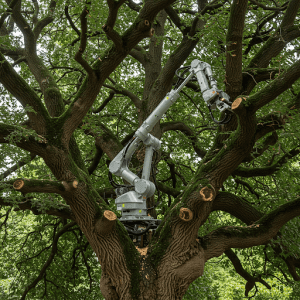
The Role of AI in Tree Pruning
At the heart of this innovation is artificial intelligence. The robot’s vision system analyzes each tree in real-time, identifying which branches need trimming based on shape, health, and growth patterns. By using cameras and algorithms, it can determine the safest and most effective cut locations, all while navigating the tree’s natural structure.
This kind of “machine vision” isn’t entirely new, but its application in tree care is groundbreaking. Unlike stationary robots or drones that require remote control, this unit climbs trees autonomously, adjusting its path as it goes—an impressive leap in both AI and robotics integration.
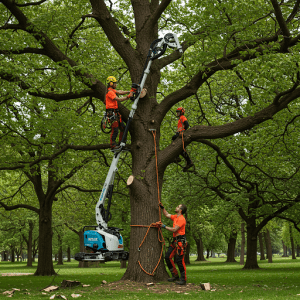
Why It Matters: Addressing Arboriculture’s Risks
Tree pruning has long been one of the most hazardous jobs in landscaping. Crews often work with chainsaws at significant heights or near power lines. One misstep can result in serious injury—or worse. In fact, arboriculture consistently ranks as one of the top professions for workplace accidents.
By introducing semi-autonomous robots into the workflow, companies can drastically reduce the exposure of workers to these dangers. Instead of climbing high into unstable canopies, arborists could operate or monitor machines from the ground. This allows teams to focus on planning and oversight rather than physical risk.

Labour Savings and Operational Efficiency
Safety isn’t the only benefit. This technology also addresses one of the biggest challenges in landscaping today: skilled labour shortages. Finding and retaining certified tree climbers is becoming increasingly difficult, particularly as older professionals retire and fewer young workers enter the field.
With AI-assisted pruning robots, crews can operate more efficiently with fewer people. While the robot doesn’t replace expert knowledge, it reduces the physical demands on staff and expands what a single team can accomplish in a day. Less time spent per tree means more jobs completed and happier clients.
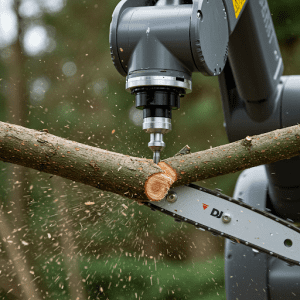
A Tech-Forward Opportunity for IslandEarth Landscape
At IslandEarth Landscape, our tree service division recently expanded with the addition of a new tree truck—built for versatility, safety, and speed. But what if the future holds even more innovation? While this pruning robot is still in the trial phase, it represents the kind of forward-thinking solution that aligns with our vision.
We’re always looking ahead, whether that means using electric equipment, improving soil health with tech-powered diagnostics, or integrating smart systems into commercial landscapes. Keeping an eye on emerging technologies like semi-autonomous pruning tools positions us to adapt quickly and provide industry-leading service to our clients.
While we’re not replacing our skilled arborists any time soon, there’s great potential in blending traditional knowledge with robotic assistance. Imagine a future where pruning robots handle basic maintenance while experts manage complex cuts, client consultation, and ecological planning.
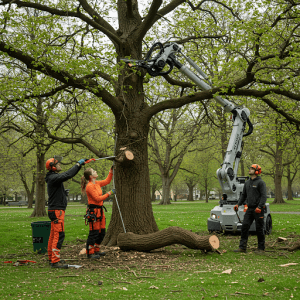
Challenges to Consider
Of course, no new technology arrives without hurdles. The cost of robotics can be high initially, especially for small-to-midsize operations. There’s also a learning curve—technicians will need to be trained not only to use but also to troubleshoot and maintain robotic systems.
There are environmental factors to consider, too. How does the robot perform in heavy rain, on trees with thick sap, or among dense foliage? Current trials are addressing these questions, and we expect improvements as the tech matures.
Finally, there’s the matter of client perception. Some may worry that machines replace human craftsmanship. But the goal isn’t replacement—it’s enhancement. Human expertise is still essential for planning, ecological sensitivity, and high-stakes pruning decisions.
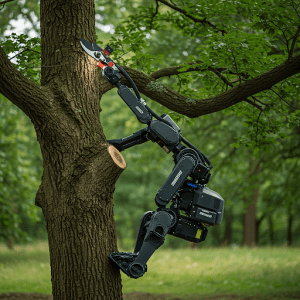
Looking Ahead
As landscaping and tree care continue to evolve, semi-autonomous tools like this pruning robot point to a future that’s safer, more efficient, and more innovative. While we’re not there yet, the day may come when robotic climbers are a regular part of our fleet, working alongside arborists to care for the urban canopy.
At IslandEarth Landscape, we’re watching this space closely—and you should too. Whether you’re a client interested in safer, more efficient services or a fellow industry professional exploring next-gen tools, the era of smart tree care is coming into view.
Let’s grow into it—together.